Location: Brooklyn
Website: laurasplan.com
Laura Splan's work examines the material manifestations of our cultural ambivalence towards the human body. Her conceptually based projects employ a range of traditional and digital techniques. She often uses found objects and appropriated sources to explore socially constructed perceptions of order and disorder. Much of her work is inspired by experimentation with materials and processes including blood, cosmetic facial peel, electromyography and digital fabrication.
The frenetic imagery in this series is formed from electromyography (EMG) data collected while performing tasks and expressions with my own body such as squinting, blinking and even unraveling a finished tapestry. The numerical EMG data was visualized in a custom Processing program that was written to repeat, rotate, and randomly colorize the EMG waveforms. The series of digitally woven tapestries examines notions of labor and craft as they relate to material and technology. By combining hand and digital processes with traditional textiles and new media technologies, the series destabilizes and interrogates how each is categorized and valued. The narrative implications of these categories are mined for their potential to explore how technology, data, and cultural artifacts mediate our understanding of the human body.
-
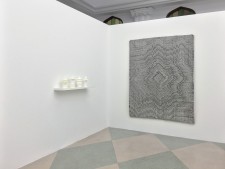
- Undo (installation view)
“Material Bodies”
ACRE Projects
April 2016
Curated by Anastasia Karpova Tinari
-
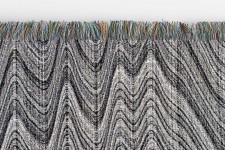
- Undo (detail of tapestry edge)
2016
computerized jacquard loom woven cotton tapestry
approx. 70”H x 53”W
Manifest is a series of data-driven sculptural forms. Numerical data was collected from EMG (electromyogram) recordings of electrical activity produced by bodily movements. Neuromuscular activities associated with experiences of wonder (delight, confusion, disbelief) were performed as facial expressions and bodily movements (frowning, smiling, swallowing). An Arduino EMG device was used to record the electrical levels in muscles. Each activity produced unique data that was translated into a curve using a custom Processing program. The curve then became the profile for a bilaterally symmetrical model for 3D printing. The project examines the potential for objects to embody human experience and to materialize the intangible. The Manifest project was created while in residence at ACRE during the summer of 2015.
-
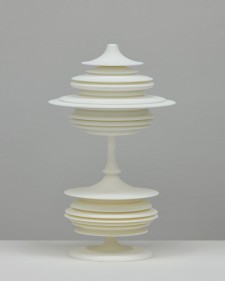
- Manifest (Blink Twice)
2015
laser sintered polyamide nylon
8”H x 4.75”W x 4.75”D
-
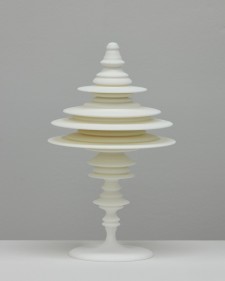
- Manifest (Swallow)
2015
laser sintered polyamide nylon
8”H x 4.75”W x 4.75”D
Squint uses electromyography (EMG) data collected while squinting to generate form. The numerical EMG data was visualized in a custom Processing program that was written to repeat, rotate, and randomly colorize EMG waveforms. The computer-generated images “weave” the waveforms together in both directions—warp and weft. While the overall image has a geometric, unified, and even tidy form, upon close inspection one can see the chaotic structure of each end of each waveform that has been altered “by hand”. Using a vector imaging program, the straight zero value beginning and end of each waveform has been teased out and reshaped to create a woven fabric-like appearance to the overall image.
-
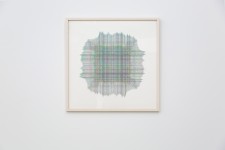
- Squint
2016
archival pigment print on hot press cotton rag
24″ x 24″
-
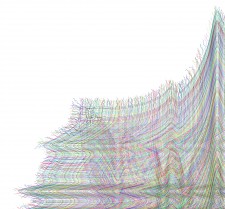
- Squint (detail)
2016
archival pigment print on hot press cotton rag
24″ x 24″
Installation View Documentation by Heather Halbert
>>View Squint on artist’s website





